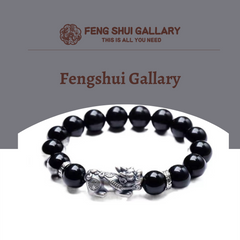Simple Ways to Tell If Jade is Real Jade or Fake
How to distinguish the true and false jade, mainly depends on the texture, color, transparency, acquired processing, cracks. The main methods to distinguish the quality and authenticity of jade include water identification, hand touch, inspection, tongue licking and magnifying glass. The reliable identification methods of gems and artificial jades on the market are: seeing, listening and testing.
Look at the texture: jade is a polycrystalline mineral formed by silicate under high temperature and high pressure. The size of its constituent crystals will directly affect the smoothness, transparency and hue after polishing. Therefore, the finer the polycrystalline structure, the better the texture of jade.
Look at the color: color is the most important factor to evaluate the quality of jade. The jade with uniform, positive, dense and positive color is the top grade“ "Uniform" means uniform“ "Yang" refers to the bright color, giving people a cheerful, no knot feeling“ "Thick" refers to the dark color“ "Zheng" means that there are no other colors mixed together.
Look at the day after tomorrow's processing: when the jade is mined, it is just like the ore. It must be carefully cut into different shapes by experienced professional craftsmen, then polished and carved, polished and waxed before it can be sold on the market. The value of "a" grade is the highest without any bleaching, fading or dyeing treatment; The bleached and faded ones were of "B" grade, followed by the value; The value of dyed "C" grade is low. Excellent postnatal processing can add flowers to jade brocade and double its value.
Look at the cracks: the cracks on the jade may be caused during mining or processing. With a crack, no matter how good its color, texture and transparency, will affect its value. Sometimes the crack is not obvious on its surface, but it can be seen by careful observation in sunlight. Especially for the bleached or dyed jade, cracks are common.
See transparency: transparency is a physical phenomenon complementary to texture. The finer the texture, the higher the transparency. If the transparency of jade is like that of glass, the fineness of its crystals can make the light straight through without being blocked. At the same time of distinguishing the quality of jade, we should also prevent the imitation of artificial jade from the real. Artificial imitation jade is made of glass, plastic and other materials after dyeing. Glass imitation jade mostly contains bubbles, with high degree of bright color, green with strong light, the color is different from real jade. Plastic imitation jade is lighter than real jade, with poor transparency and dull tone, which is far from real jade.
The following introduces the advantages and disadvantages of jade and the methods of distinguishing true and false jade
Hand touch method: if it's real jade, touch it with your hand, it will feel cold and smooth.
Tongue licking method: licking real jade with the tip of the tongue has astringent feeling; The fake jade has no astringent feeling.
Water identification method: drop a drop of water on the jade, such as a real jade that does not disperse for a long time; It's the fake and shoddy goods that will soon disappear.
Inspection method: the jade toward the light, such as sunlight, light, if the color clear, green uniform distribution is real jade.
Magnifying glass viewing: put the selected jade under the magnifying glass to see whether there are cracks. The jade without cracks is of high quality,
Cracks are the second. Even if it is a real jade, its value will be greatly reduced if there are cracks. The more obvious the cracks are, the lower the value will be.
Jade discrimination oral language: - clear two turbid three flowers four red five colors seven colors nine blurred.
Qingerzhuo: identification of jade composition. Three flowers, four reds, five colors, seven colors and nine Puzzles: the method of determining the color quality of jade.
Identification of ancient jade composition
- clear: the clearer the texture, the better. Clear to clear, transparent without impurities. It is the top grade.
Two turbid: turbid to thick, turbid to reflective, see the content, the more uniform concentration and no impurities, for the top grade. Determination of color and quality of ancient jade
Three flowers: the three-dimensional feeling of the finished jade mainly depends on the sculptors, who make the most valuable shape design for the jade by using the original material condition of the jade to show the characteristics of the jade.
Four red: refers to the brightness and luminosity of jade, no defects
Five colors: the less the difference in fineness, the better. The natural color of jade, such as green and red, the less the difference in color, the better
Seven colors: also known as flash color, that is, the refraction color of jade to light, such as what color is under one kind of light source and light intensity, and the color change under another kind of light source and light intensity. The greater the color change, the better.
Nine confused: jade quality and shape, color, pleasant things, significance. In monochrome, it is very gorgeous. It can match the personality of people who wear natural jade and artificial jade.
The reliable way to distinguish precious jade from artificial jade on the market is to listen, watch and test.
Listen, Zhenyu's voice is clear and crisp, otherwise it is dull and dumb; See, mainly see crystal transparency, real jade transparency is stronger, grease luster; Test, real jade from the glass across, leaving scratches on the glass, and the jade itself is not damaged.
The common fake jades include plastic, colored glass, dolomite, electrochromic fake jades, synthetic jades made of jade powder, crystal and salt water, and imitation jades made of nitrate. The texture of plastic is lighter than jade, the hardness is poor, and it is generally easy to identify.


